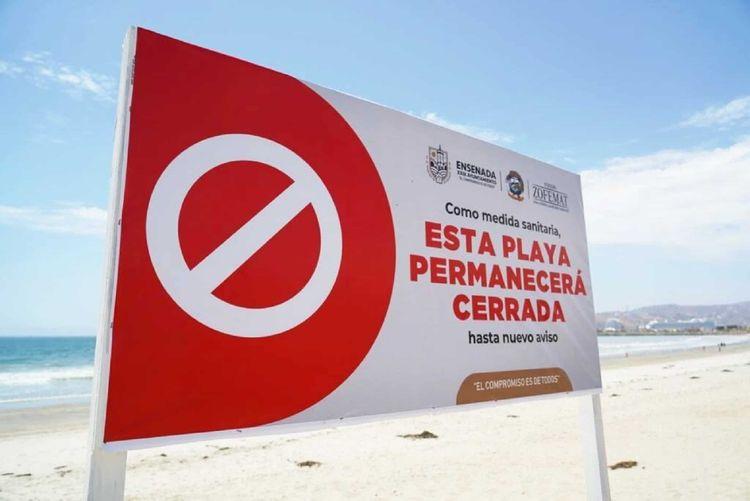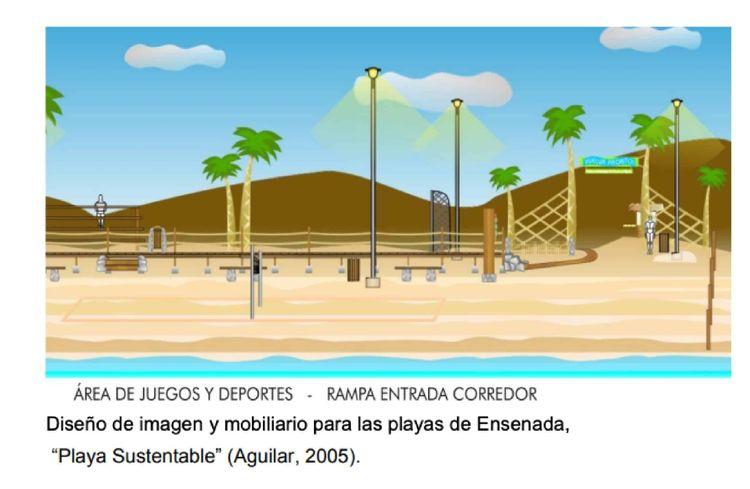The closure of beaches due to pollution in Ensenada's waters is a story that repeats itself every year. This summer, Playa Hermosa was positioned as the only one not suitable for recreation among all the coastal destinations in Mexico.
Of a total of 199 beaches examined, only Playa Hermosa was the only one that did not meet the enterococcus safety levels established by the World Health Organization (WHO), according to the 2021 summer pre-vacation monitoring carried out by the Ministry of Health, through the Federal Commission for Protection against Health Risks (Cofepris). This was repeated in 2017.
The concentration of enterococci represents a health risk because they are wastes from wastewater that reaches the sea. Their contact may cause serious skin irritations and infections.
“The problem in Todos Santos Bay - where Playa Hermosa is located - dates back to the fishing boom in the 80s [...] The locally recognized and reported cause is in the treatment plants of CESPE (Ensenada State Public Services Commission) such as El Naranjo and El Gallo, where we have seen that when some of them don't work, there are discharges,” explained Ruth Rosas, oceanologist and independent environmental consultant in an interview with Causa Natura.
Just last July 23, Marcelino Márquez Wong, director of CESPE, acknowledged at a press conference that the parastatal sector may be related to wastewater that flows to the sea.
Wastewater processing plants have an infrastructure problem that has been relegated since past administrations, said Márquez Wong. Mainly the El Gallo and El Naranjo plants, which exceed up to 50% of their capacity.
However, Cespe may not be solely responsible. The official added that the level of pollution may be related to other actors operating in a clandestine manner, but studies are needed to confirm this.
The information was released just three days after the mayor of Ensenada, Armando Ayala Robles, formally filed a complaint with the Federal Attorney for Environmental Protection (Profepa). In addition to taking the step of closing the Conalep 1 area, where pollution also reached them.

Notice of the closure of Playa Hermosa and the Conalep area following the results of the 2021 pre-vacation monitoring.
Photo: Facebook of the Mayor of Ensenada, Armando Ayala Robles.
The importance of participating
“The problem on the beaches of Ensenada has been a lifetime,” said Sergio Sañudo-Wilhelmy, a professor at the University of Southern California. “It has happened since the 80s, but people forget it and a few years later when they do this type of study (such as the pre-vacation monitoring of Cofepris) they wake up again.”
Sañudo-Wilhelmy, like Ruth Rosas, carried out various researches for the Autonomous University of Baja California (UABC). Most of them for more than a decade.
“But back then there wasn't as much industry in Ensenada. It's always much easier if you don't have industrial processes, and at that time most of the processes were in Tijuana,” recalled researcher Sañudo-Wilhelmy.
One of the main problems in combating wastewater pollution that spreads on Ensenada's beaches is the lack of validity in studies and the absence of participation.
In 2006, Ruth Rosas joined Doing What's Necessary, a local organization responsible for raising awareness and influencing the issue of wastewater pollution in Ensenada.
For seven years, they carried out actions such as guiding the Clean Beaches Committee involving citizens, a state program on waterfront infrastructure and an ecological beach walk project in Todos Santos Bay. But the various projects of its members meant that Doing What Is Necessary had to stop their activities.
“Unfortunately, now that we have let our guard down, we need people to continue to push this forward. We need other actors to continue to get involved [...] Because the city council and each state government don't seem to understand the importance of care, the importance of involving the actors in an active Beach Committee,” said the consultant.
One of the last studies published by Ruth Rosas was the thesis “Proposal for the Management of the Municipal Beach of Ensenada, Baja California” in 2008. The work referred to the need to apply the NMX-AA-120-SCFI-2006, which establishes the requirements and specifications for the sustainability and quality of beaches.
“There I stipulated that from the liberation of the port to the Conalep area it was a route that should only be used as a walk, not to concentrate users. Because even the quality of the sand is different [...] the fact that people keep entering there contributes to the poor management of the area and affects the health of users. How many can get infected and don't know it?” , Rosas explained.

Infrastructure proposal for a sustainable beach included in the municipal beach management thesis in
Ensenada. Credit: Prepared by Ruth Rosas in 2008.
Timeless proposals
Despite the fact that the studies lose their validity, they are a precedent for proposals and possible solutions. Professor Sergio Sañudo-Wilhelmy and environmental consultant Ruth Rosas agree on the importance of government and citizen participation.
“The Clean Beaches Committee definitely has to be activated by the municipality because all the actors involved are there. It is a regulation where all the actors are active, together with civil society. We must resume the lines of action that were left pending,” said Rosas.
The rest of the proposals have been repeated since the 80s when industrial activity reached Ensenada: new studies, strategic management plans, statements not to allow entry to contaminated areas and surveillance by authorities in wastewater treatment plants. But so far, they are still pending.



Comentarios (0)